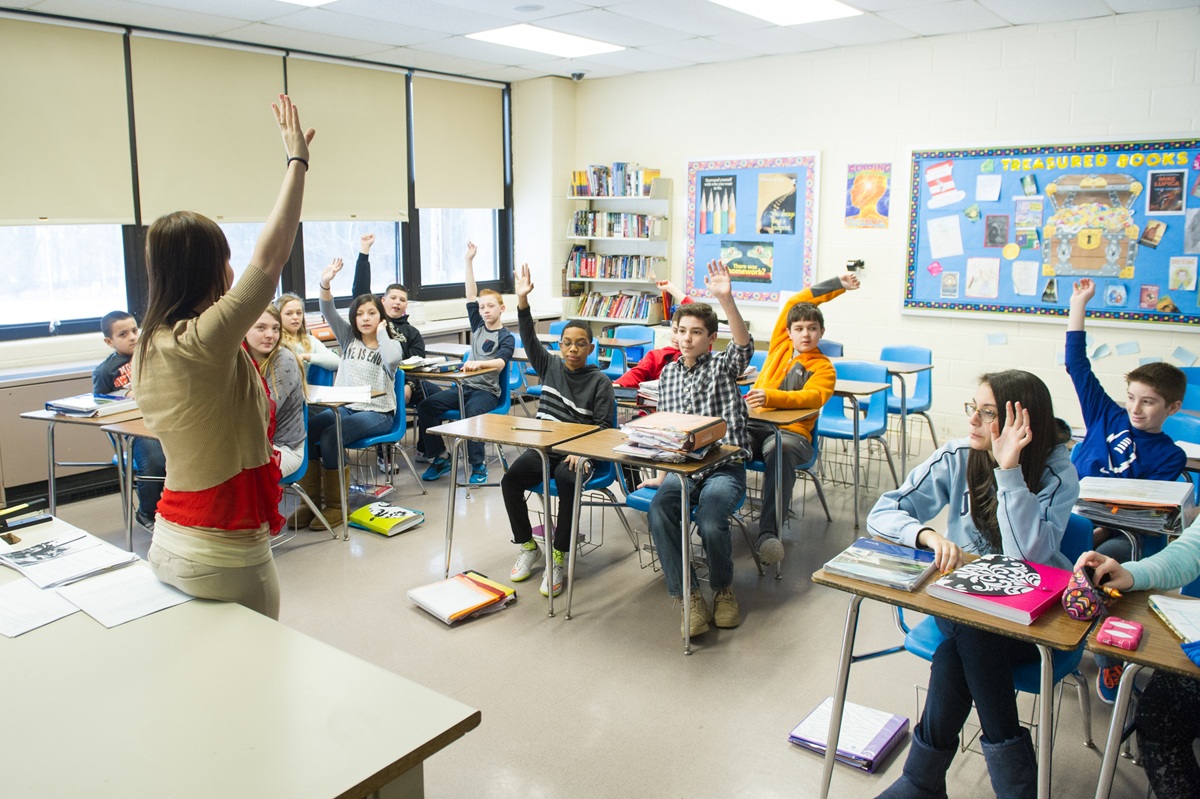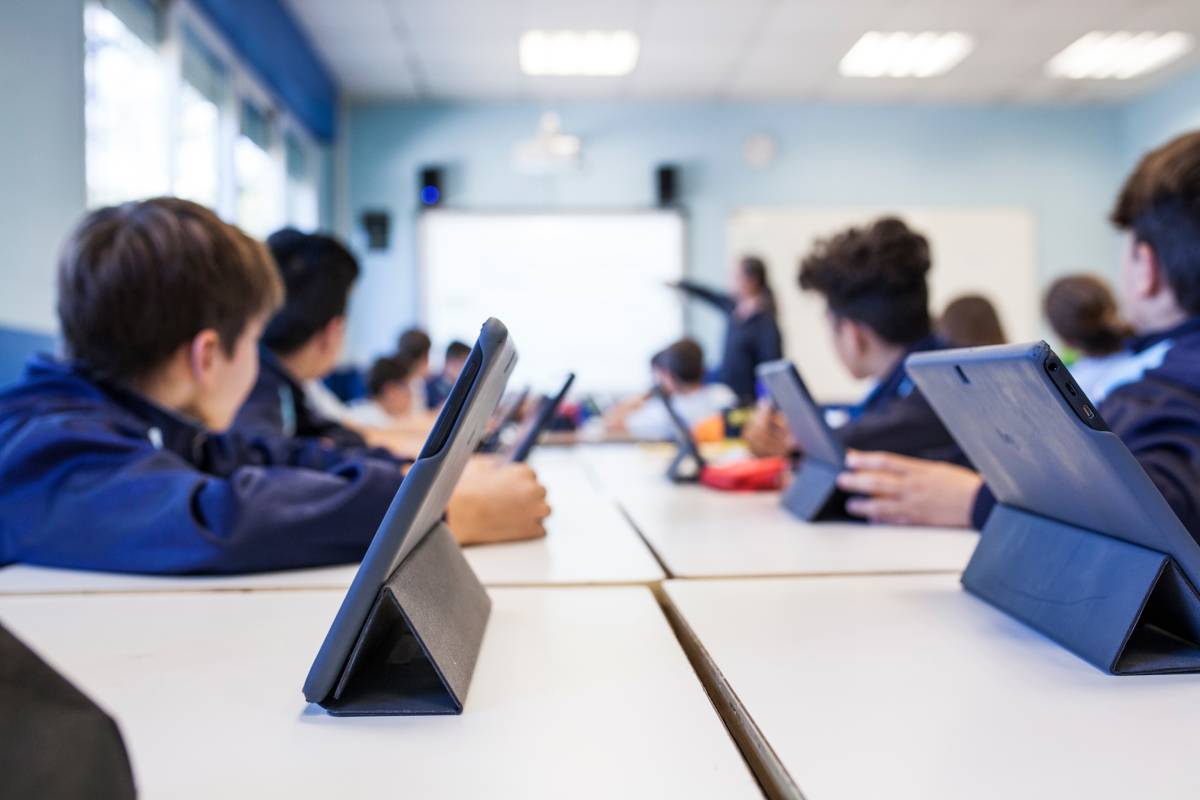Boost Your Child’s Confidence with Primary Science Tuition Singapore
Boost Your Child’s Confidence with Primary Science Tuition Singapore
Blog Article
A Comprehensive Guide to the Numerous Understanding Approaches in Key Science Guideline
The exploration of varied understanding methods in primary science guideline offers an opportunity for educators to enhance trainee engagement and understanding substantially. By examining hands-on learning methods, inquiry-based strategies, and collaborative approaches, we can recognize efficient methods that cater to various learning styles.

Hands-On Learning Strategies
Hands-on understanding strategies play an essential duty in main science instruction, involving trainees in energetic expedition and experimentation. These methods permit learners to interact straight with materials and sensations, cultivating a much deeper understanding of clinical concepts. By using manipulatives, models, and real-life experiments, instructors produce a setting where students can observe, assume, and check their concepts.
Such methods not just boost understanding but likewise grow important reasoning and problem-solving skills. When pupils take part in tasks like building straightforward equipments, growing seeds, or carrying out chain reactions, they are encouraged to ask concerns and seek answers with their own monitorings. This experiential approach assists to demystify intricate scientific principles, making them much more relatable and easily accessible.
Moreover, hands-on understanding advertises collaboration among peers, as students often function in groups to conduct experiments or share findings. This team effort not only enriches their understanding experience yet likewise develops essential social skills. Inevitably, incorporating hands-on methods in main science direction cultivates a long-lasting love of discovering and inquisitiveness about the environment, laying a strong structure for future academic pursuits in scientific research and beyond.
Inquiry-Based Knowing
Inquiry-based learning is an educational technique that urges students to ask inquiries, check out phenomena, and construct their very own understanding of scientific concepts. This method changes the focus from standard teacher-led direction to a much more student-centered experience, where students take the campaign in their academic trip. By cultivating interest, inquiry-based knowing promotes much deeper interaction with the material, enabling students to explore topics in a purposeful context.
In practice, this approach typically involves hands-on experiments, observations, and important thinking tasks that straighten very closely with the scientific method. Pupils are urged to formulate hypotheses, design examinations, and assess information, which grows vital skills such as logical and analytic reasoning. The duty of the teacher in this framework is to facilitate expedition, leading pupils via the query process while urging independent thought and cooperation.
Furthermore, inquiry-based learning supports a feeling of ownership over the learning process, inspiring trainees to pursue understanding proactively. This approach not only boosts understanding of scientific ideas but also fosters a lifelong love for discovering, furnishing students with the abilities essential to navigate an increasingly intricate globe.
Collaborative Discovering Approaches
Joint knowing techniques encourage pupils to participate in purposeful interactions with peers, cultivating a shared duty for their instructional outcomes. In key scientific research guideline, these methods urge students to collaborate to explore clinical concepts, fix issues, and conduct experiments (primary science tuition Singapore). By taking part in group activities, pupils can take advantage of diverse point of views, permitting richer understanding and retention of clinical expertise
One key facet of collaborative knowing is the emphasis on communication abilities. Pupils have to articulate their ideas, listen proactively to others, and negotiate ideas, every one of which are crucial competencies in both real-world and academic contexts. This social interaction not just boosts their understanding of scientific principles however additionally advertises synergy and problem resolution skills.
When students see the value of their payments within a team, they are much more likely to take ownership of their learning journey. In general, integrating joint knowing methods in key my site science instruction cultivates a vibrant understanding setting that prepares students for future scholastic and social obstacles.
Modern Technology Integration in Scientific Research
The assimilation of innovation in main science direction improves finding out experiences by offering cutting-edge tools and sources that sustain various teaching techniques, including collaborative understanding - primary science tuition Singapore. The use of electronic platforms, simulations, and interactive applications allows students to involve deeply with clinical ideas, facilitating a much more hands-on technique to knowing
Online labs, as an example, make it possible for learners to conduct experiments safely and efficiently, promoting inquiry-based understanding. These tools can simulate real-world scientific situations, enabling pupils to imagine complex procedures that would certainly be tough to reproduce in a traditional classroom setting. Technology promotes interaction and partnership amongst pupils, as they can share findings and function together on projects with online platforms.
Additionally, multimedia presentations and academic video clips can enhance lessons by satisfying varied knowing styles, making abstract concepts more accessible. Information analysis tools additionally equip pupils to accumulate and interpret clinical data, strengthening crucial thinking skills. In general, the tactical consolidation of innovation in main science direction not only enhances involvement however also prepares pupils for a technologically sophisticated culture, outfitting them with crucial abilities for future scientific ventures.
Distinguished Guideline Approaches
Differentiated guideline methods are vital for addressing the varied demands of students in main science education and learning. These techniques allow instructors to customize their training approaches to fit differing capabilities, interests, and learning styles within the class. By utilizing differentiated direction, teachers can produce a comprehensive atmosphere that promotes interaction and boosts understanding of scientific concepts.
One effective technique is to make use of versatile organizing, which enables pupils to work together with peers at comparable ability levels or with varying point of views. This approach urges peer learning and advertises crucial reasoning. In addition, using selections in projects can empower pupils, allowing them to choose jobs that resonate with their rate of interests while still meeting curricular objectives.
In addition, including tiered assignments is another useful method. Deliberately tasks with differing levels of intricacy, educators can guarantee that all trainees are properly tested, no matter their effectiveness. Utilizing developmental assessments to gauge visit their website comprehending additional makes it possible for educators to readjust their educational approaches dynamically, making certain that each learner gets the support they need.
Eventually, executing separated direction methods in main scientific research education not only boosts pupil knowing outcomes but also cultivates an enthusiasm for science, preparing students for future academic searches.

Final Thought
In summary, reliable primary scientific research direction necessitates a diverse approach that includes hands-on learning, inquiry-based techniques, and joint techniques. The assimilation of modern technology and differentiated direction further caters to varied knowing designs, fostering a setting helpful to expedition and critical thinking.
The exploration of varied understanding methods in key science guideline provides an opportunity for teachers to improve pupil involvement and comprehension dramatically.Hands-on knowing strategies play an essential visit this web-site role in main scientific research direction, involving trainees in energetic expedition and testing.Inquiry-based knowing is an educational method that encourages pupils to ask concerns, examine phenomena, and create their own understanding of clinical concepts.Joint discovering techniques equip trainees to involve in significant communications with peers, fostering a shared responsibility for their educational outcomes. Overall, incorporating joint understanding methods in main science instruction grows a vibrant knowing environment that prepares students for future academic and social difficulties.
Report this page